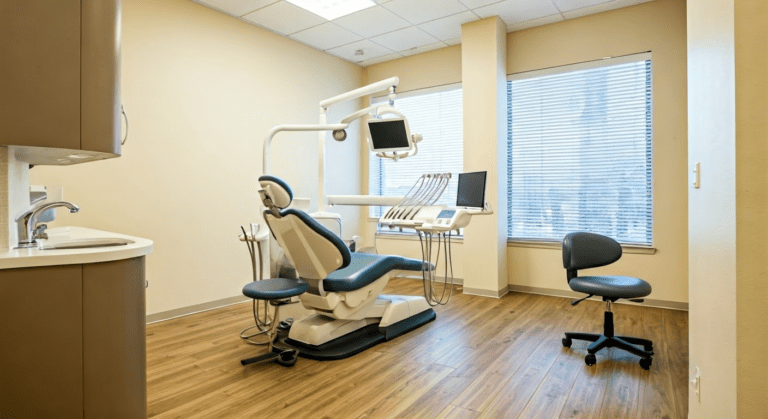7 Proven Tips for Patient Appointment Optimization
Did you know that nearly 30% of medical appointments end in no-shows, costing the healthcare industry billions annually? Or can long wait times drop patient satisfaction by up to 40%?
These issues affect patient care and put immense pressure on hospital management and healthcare providers.
With AI, machine learning, and healthcare data analytics revolutionizing medical services, optimizing patient appointments is more critical than ever. From handling no-shows to reducing long wait times, the targeted approach can improve attendance rates, streamline scheduling, and enhance overall efficiency.
In this blog, we’ll discuss seven practical tips for helping healthcare providers optimize patient appointments for better outcomes.
The Power of Patient Appointment Optimization
Patient appointment optimization isn’t just about scheduling—it’s about transforming healthcare efficiency. A well-optimized system doesn’t just cut wait times and reduce no-shows; it also improves service quality, boosts operational efficiency, and enhances patient satisfaction, which has been crucial in recent years.
By streamlining scheduling, healthcare providers can create a seamless patient experience while maximizing resources, improving productivity, and driving revenue growth.
Why Patient Appointment Optimization Matters for Patients?
A well-structured patient appointment optimizer brings multiple benefits, making healthcare services more accessible, efficient, and convenient for patients:
- Faster Access to Care: Patients can book appointments easily, reducing delays and ensuring timely medical attention.
- Greater Scheduling Flexibility: Self-scheduling options let patients choose convenient times that fit their personal and work commitments.
- Fewer Missed Appointments: Automated reminders and confirmations keep patients informed, reducing no-shows.
- Shorter Wait Times: Optimized scheduling system prevents overbooking and inefficient slot allocation, creating a smoother, stress-free experience.
How do Healthcare Practices Benefit from Patient Appointment Optimizers?
Effective patient appointment scheduling for healthcare providers isn’t just about managing bookings—it’s a key driver of operational success and financial stability by providing easy access to healthcare facilities. Here’s why:
- Streamlined Workflow & Reduced Bottlenecks: A well-structured system evenly distributes patients, preventing overcrowding and idle slots.
- Lower Administrative Burden: Automated reminders and online self-scheduling free up front-desk staff to focus on more critical tasks.
- Enhanced Patient Satisfaction & Reputation: A seamless scheduling process keeps patients happy, boosts loyalty, and strengthens the provider’s reputation.
- Cost Savings & Revenue Growth: Fewer no-shows and cancellations mean clinics can maximize appointment capacity, increasing revenue and improving resource allocation.
8 Current Challenges in Patient Scheduling (+Solutions!)
Despite its importance, patient appointment optimization has significant challenges affecting efficiency, patient satisfaction, and revenue. Here’s how to tackle them:
- Long Wait Times – Inefficient scheduling leads to extended patient wait times, causing frustration.
Solution: Implement AI-driven scheduling tools and optimize resource allocation to ensure a smoother patient flow. while addressing the appointment scheduling problem.
- Missed Appointments & No-Shows – Last-minute cancellations waste time slots and disrupt scheduling.
Solution: Use automated reminders, penalty-based policies, and waitlist management to reduce no-shows and keep schedules full.
- Overbooking & Underbooking Issues – An overbooking strategy can cause overcrowding, while underbooking leads to revenue loss.
Solution: Data-driven appointment forecasting can balance scheduling, preventing excessive downtime or patient overload.
- Managing Diverse Patient Needs – Emergency cases and chronic illness patients need priority scheduling, leading to conflicts.
Solution: Implement triage-based scheduling that prioritizes urgent cases while maintaining appointment flow.
- Last-Minute Cancellations & Rescheduling – Frequent schedule disruptions make patient flow unpredictable.
Solution: Utilize real-time scheduling adjustments and standby appointment slots to fill gaps efficiently.
- Limited Integration of Data & Technology – Many healthcare providers lack AI-powered scheduling tools for predictive insights.
Solution: Invest in machine learning and analytics-driven platforms that optimize appointment scheduling based on historical data.
- Resource Constraints in High-Demand Settings – Emergency departments and specialty clinics struggle with limited staff and facilities.
Solution: Adaptive scheduling models help distribute resources efficiently, ensuring high-priority cases receive attention without overwhelming the system.
- Lack of Data-Driven Optimization – Many healthcare organizations don’t leverage analytics for scheduling efficiency in different ways.
Solution: Use discrete event simulation and linear programming to create an optimized scheduling strategy that maximizes efficiency and minimizes patient wait times.
Healthcare providers can address these challenges with technology, automation, and data-driven strategies to create a seamless, efficient, and patient-friendly appointment system.
Tips for Effective Patient Appointment Optimization

Tip 1: Implement Efficient Appointment Scheduling Methods
Optimizing patient appointments starts with making scheduling easy and efficient for patients and healthcare centers. By offering multiple booking options—like online self-scheduling and traditional phone calls—medical centers can cater to different preferences while keeping operations smooth.
Tools like AI, healthcare data analytics, and appointment optimizers can help reduce scheduling conflicts, improve accessibility, and boost attendance rates. When patients have flexible and convenient booking options, everyone benefits.
Online Self-Scheduling
Online self-scheduling transforms outpatient appointment systems by allowing patients to conveniently book, modify, and cancel appointments. This method aligns with new trends in healthcare research, enabling higher efficiency in appointment flow and reducing no-shows and last-minute cancellations.
Phone Bookings
While digital transformation in healthcare is accelerating, some patients still prefer traditional phone bookings. These patients—particularly elderly individuals or those with limited digital literacy—may feel more comfortable speaking directly with a staff member when scheduling a large number of patients' medical appointments.
Importance of Phone Calls in Appointment Scheduling
- Personalized Patient Interaction – Phone conversations allow for direct communication with clinic staff, providing an opportunity to address patient concerns, clarify medical requirements, and improve the overall patient experience.
- Inclusive Scheduling Approach – Not all patients can or are comfortable using digital tools. Maintaining phone-based scheduling ensures that all patient demographics receive equal access to healthcare services.
- Supplementing Online Systems—During peak appointment booking periods, phone call tracking acts as a backup system, reducing the strain on digital platforms and preventing system overload.
- Gathering Crucial Patient Information – Phone bookings provide a structured avenue for medical centers to collect essential health details, helping optimize appointment scheduling based on patient needs.
- Emergency Appointment Management—In situations requiring higher priority, such as emergency department visits or specialty care needs, phone scheduling enables immediate intervention and faster triaging.
Tip 2: Utilize Automated Reminders and Confirmations
Automation transforms patient scheduling, making medical centers more efficient and improving appointment management. Using AI, healthcare data analytics, and predictive modeling, automated systems reduce missed appointments and ease administrative burdens while ensuring a seamless booking experience.
Reduce No-Shows
Missed medical appointments lead to financial losses, inefficiencies, and increased patient backlog in specialty clinics and primary care facilities. Research published on Google Scholar and healthcare literature reviews indicates that automated reminders can significantly decrease no-show rates by informing patients about their start time and allowing easy rescheduling.
Save Staff Time
Manual appointment confirmation requires significant staff effort, diverting focus from critical patient care responsibilities. Automating reminders and scheduling confirmations enables efficient hospital management by allowing healthcare professionals to prioritize higher-priority tasks.
Tip 3: Streamline Appointment Durations Based on Patient Needs
Effective patient appointment optimization requires a strategic approach to managing appointment durations based on patient needs, visit types, and healthcare resources. By implementing structured scheduling templates and integrating preregistration packets, medical centers can significantly enhance efficiency, reduce patient wait times, and optimize staff workflow.
Recent healthcare research and literature reviews emphasize the importance of adaptive scheduling models in outpatient appointment settings for various patient groups, including the use of a simulation model. Leveraging artificial intelligence, machine learning, and discrete event simulation, healthcare providers can ensure optimal scheduling solutions that serve as the optimal solution tailored to different types of medical visits.
Create Templates for Different Visit Types
Not all medical appointments require the same time. While a routine check-up may take only a few minutes, a comprehensive diagnostic evaluation demands an extended session. Optimizing appointment durations based on historical data and case studies ensures a balanced schedule, preventing bottlenecks in outpatient scheduling problems and enhancing performance measures.
Consider Preregistration Packets for New Patients
Implementing preregistration packets for new patients is one of the most effective ways to reduce wait times and streamline outpatient appointments. These digital intake forms allow healthcare providers to gather essential patient data before the visit, minimizing administrative delays and patient appointment optimizations.
Tip 4: Maintain a Waitlist and Manage Unexpected Situations
Unforeseen circumstances, such as last-minute cancellations, no-shows, emergency cases, or walk-in patients, can disrupt even the most carefully crafted appointment scheduling system within a healthcare environment. By incorporating a strategic waitlist and dedicated emergency slots, healthcare providers can optimise seamless patient appointments for such patients, minimizing disruptions and maximizing efficiency.
Modern hospital management systems and artificial intelligence-driven scheduling tools can predict scheduling trends, helping medical centres proactively address outpatient scheduling problems while maintaining high attendance rates and patient satisfaction.
Reserve Time Slots for Walk-ins and Emergencies
Allocating time slots for walk-ins and emergencies in your daily schedule can be a game-changer. Emergencies are unpredictable and can occur at any point. Setting aside specific slots to accommodate these incidents will prevent your entire schedule from going awry when they do occur.
Likewise, walk-ins are an excellent opportunity to attract new patients and cater to those who prefer or need immediate attention at specialty clinics, promoting an open access system. Having block slots available to them enhances the clinic's accessibility and caters to a broader spectrum of patients.
Fill Cancellations Quickly
Appointments are often cancelled in healthcare practices, leading to idle time slots and affecting the practice's productivity and revenue. One practical solution is maintaining a waitlist of patients who can be pulled in quickly. This ensures that the slot doesn't go unutilized even if a scheduled appointment gets cancelled.
Quickly filling cancellations optimises the practitioner's time and satisfies the waitlisted patients, who may appreciate the opportunity to be seen sooner than their initially scheduled appointment.
Tip 5: Make Use of Data Analytics and Business Intelligence
Embracing data analytics and business intelligence can present unprecedented insights into your scheduling patterns, staff performance, patient preferences, and more. By leveraging this data wisely, healthcare practices can enhance workforce management, maximize resource allocation, and optimise appointment scheduling.
Enhance Workforce Management
Data analytics can transform workforce management in a healthcare setting. An analytical understanding of historical trends, peak hours, and fluctuating patient volumes can aid in accurately forecasting staffing needs.
As a result, healthcare centres can schedule their staff strategically to maintain optimal patient flow throughout the day. This eliminates both overstaffing and understaffing scenarios, thus enhancing operational efficiency and cost-effectiveness. When the workforce is aligned with the patient influx, waiting times are reduced, improving patient satisfaction.
Maximize Resource Allocation
Another massive advantage of data analytics in patient scheduling is maximising resource allocation. With real-time insights derived from appointment histories, traffic patterns, and patient demographics, healthcare providers can make informed decisions regarding resource deployment. They can identify times when maximum resources are needed and plan accordingly.
Alternatively, they can also determine periods of lesser demand and accordingly reduce resource engagement. This practical resource optimization results in the minimization of wastage, maximization of utilization, and a significant spike in operational efficiency, representing the best way to improve overall performance.
Tip 6: Communicate Appointment Policies
Clear communication of appointment policies to patients is crucial to efficient scheduling management. Well-established guidelines for cancellations, rescheduling, and payment procedures ensure smoother operations and promote a solid understanding between patients and healthcare providers.
Establish Cancellation and Rescheduling Guidelines
Establishing cancellation and rescheduling policies can significantly reduce no-shows and last-minute cancellations. The clinic must communicate these policies effectively to the patients during the booking process. Cancellation and rescheduling guidelines should include the requisite notice period for cancellations, potential fees for no-shows or late cancellations, and the process to reschedule appointments. By clearly setting these expectations, healthcare practices can ensure maximum patient adherence, leading to better schedule management and fewer disruptions.
Inform Patients about Payment Procedures
Clarity in payment procedures is another critical component of patient scheduling. Patients who understand the billing process and financial obligations are less likely to miss their appointments due to financial concerns. When scheduling an appointment, healthcare providers should ensure patients know about copayments, deductibles, and other out-of-pocket costs. Providing a comprehensive breakdown of costs helps maintain transparency and minimizes potential billing disputes in the future. Clear communication regarding payment procedures reduces the chances of cancellation due to monetary surprises, thus contributing to stable and reliable patient scheduling.
Tip 7: Provide Comprehensive Patient Education Resources
Educating patients about their health condition, timely medical interventions, and appointment adherence influence effective patient scheduling. The availability of pertinent information through the proper channels makes the patients more invested in their healthcare journey and encourages them to participate actively.
Share Relevant Information on Your Website
Well-informed patients will likely be more proactive and cooperative in their healthcare journey. In today's digital era, most patients resort to online research for medical information. Therefore, sharing relevant information on your website, such as the diseases your clinic specializes in treating, preventive care tips, scientific news related to your healthcare domain, or educating articles about common illnesses, can elevate your patient's knowledge levels. It will also help establish your credibility among the patients and encourage them to turn up for their scheduled appointments, contributing to enhanced patient scheduling.
Take Your Scheduling to the Next Level with Practice by Numbers
Practice by Numbers (PbN) empowers healthcare and dental practices with seamless online appointment booking, instant PMS synchronization, and full customization options to fit your practice’s needs. Whether you run a single practice, a multi-location clinic, or manage scheduling for a DSO, PbN ensures that every appointment opportunity is captured efficiently.
- Instant Online Scheduling – Let patients book on your website or Google
- Automated Cancellations & Waitlist Management – Keep your schedule full
- Seamless Integration – Syncs with your practice management software
- Improved Patient Engagement – Reduce no-shows & enhance accessibility
Don’t let missed appointments and scheduling inefficiencies hold your practice back. Upgrade to PbN and experience the future of patient scheduling.
Get a demo today and see the difference!
Conclusion
In healthcare, patient scheduling isn't just about filling slots—it's about optimizing efficiency, enhancing patient satisfaction, and maximizing practice potential. A well-structured scheduling system, including flow shop scheduling, ensures smoother operations, better resource management, and a superior patient experience.




